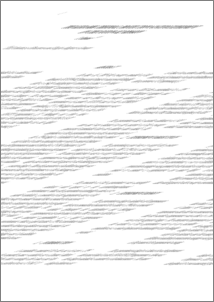|
|
The KERAMIK Thermal Protection System Experiment on the FOTON-M2 Mission
Reimer, Thomas
(2006)
The KERAMIK Thermal Protection System Experiment on the FOTON-M2 Mission.
In: 5th European Workshop on Thermal Protection Systems and Hot Structures.
Thermal Protection Systems and Hot Structures (5th Workshop), 2006-05-17 - 2006-05-19, Noordwijk, NL.
ISBN 92-9092-942-1.
ISSN 1609-042X.
![[img]](https://elib.dlr.de/style/images/fileicons/application_pdf.png)  Vorschau |
|
PDF
7MB |
KurzfassungOn June 16, 2005 the re-entry module of the Russian FOTON-M2 spacecraft made a successful landing after a 16-day microgravity mission in space. On board was also the “KERAMIK” experiment by the Institute of Structures and Design of the German Aerospace Center (DLR) in Stuttgart, Germany. The re-entry technology experiment was aiming for the first flight of a Thermal Protection System (TPS) with it´s structural components designed and manufactured fully in C/C-SiC, a Ceramic Matrix Composite (CMC) material developed by DLR.
The experiment had a surface diameter of 340 mm and was located on the exterior of the re-entry spacecraft embedded into the ablative heat shield. The emphasis of the experiment was on the system aspects of the TPS design. It included two stiffened surface panels each fixed to three structural posts with a special fastener type, all components made from the C/C-SiC material. The experiment deliberately included a gap between the panels and a surrounding close-out ring to test the performance of a dedicated seal in that area. In addition to the structural aspects of the experiment, a set of different oxidation protection coatings was applied to the surface of one of the panels to conduct a comparative test under flight conditions.
The position of the experiment was carefully selected with regard to the aerothermodynamic environment. Since the experiment technology aims at re-usable vehicles, a position in the stagnation area of the ballistic re-entry module would have resulted in excessive heat loads. Therefore a location was preferred at an angle of almost 90° relative to the flight direction. The temperature data that was measured during re-entry shows that the surface temperature was close to 1500°C, which was in the targeted range. The structural components on the surface of the experiment were in an excellent condition as a visual inspection immediately after landing revealed. | elib-URL des Eintrags: | https://elib.dlr.de/46736/ |
|---|
| Dokumentart: | Konferenzbeitrag (Vortrag, Paper) |
|---|
| Titel: | The KERAMIK Thermal Protection System Experiment on the FOTON-M2 Mission |
|---|
| Autoren: | | Autoren | Institution oder E-Mail-Adresse | Autoren-ORCID-iD | ORCID Put Code |
|---|
| Reimer, Thomas | NICHT SPEZIFIZIERT | NICHT SPEZIFIZIERT | NICHT SPEZIFIZIERT |
|
|---|
| Datum: | 17 Mai 2006 |
|---|
| Erschienen in: | 5th European Workshop on Thermal Protection Systems and Hot Structures |
|---|
| Referierte Publikation: | Nein |
|---|
| Open Access: | Ja |
|---|
| Gold Open Access: | Nein |
|---|
| In SCOPUS: | Nein |
|---|
| In ISI Web of Science: | Nein |
|---|
| Herausgeber: | | Herausgeber | Institution und/oder E-Mail-Adresse der Herausgeber | Herausgeber-ORCID-iD | ORCID Put Code |
|---|
| ESA, | NICHT SPEZIFIZIERT | NICHT SPEZIFIZIERT | NICHT SPEZIFIZIERT |
|
|---|
| ISSN: | 1609-042X |
|---|
| ISBN: | 92-9092-942-1 |
|---|
| Status: | veröffentlicht |
|---|
| Stichwörter: | Thermal Protection System, Ceramic Matrix Composite, C-SiC, C/C-SiC, Foton, re-entry, reentry, entry, heat shield, ablation, oxidation protection |
|---|
| Veranstaltungstitel: | Thermal Protection Systems and Hot Structures (5th Workshop) |
|---|
| Veranstaltungsort: | Noordwijk, NL |
|---|
| Veranstaltungsart: | internationale Konferenz |
|---|
| Veranstaltungsdatum: | 2006-05-17 - 2006-05-19 |
|---|
|
Veranstalter
: | ESA |
|---|
| HGF - Forschungsbereich: | Verkehr und Weltraum (alt) |
|---|
| HGF - Programm: | Weltraum (alt) |
|---|
| HGF - Programmthema: | W RP - Raumtransport |
|---|
| DLR - Schwerpunkt: | Weltraum |
|---|
| DLR - Forschungsgebiet: | W RP - Raumtransport |
|---|
| DLR - Teilgebiet (Projekt, Vorhaben): | W - Grundlagen Raumtransport - Innovativer Thermalschutz (alt) |
|---|
| Standort: |
Stuttgart
|
|---|
| Institute & Einrichtungen: | Institut für Bauweisen- und Konstruktionsforschung > Raumfahrt- System- Integration |
|---|
| Hinterlegt von: |
Reimer, Thomas
|
|---|
| Hinterlegt am: | 10 Jan 2007 |
|---|
| Letzte Änderung: | 31 Jul 2019 19:18 |
|---|
Nur für Mitarbeiter des Archivs: Kontrollseite des Eintrags
|
|